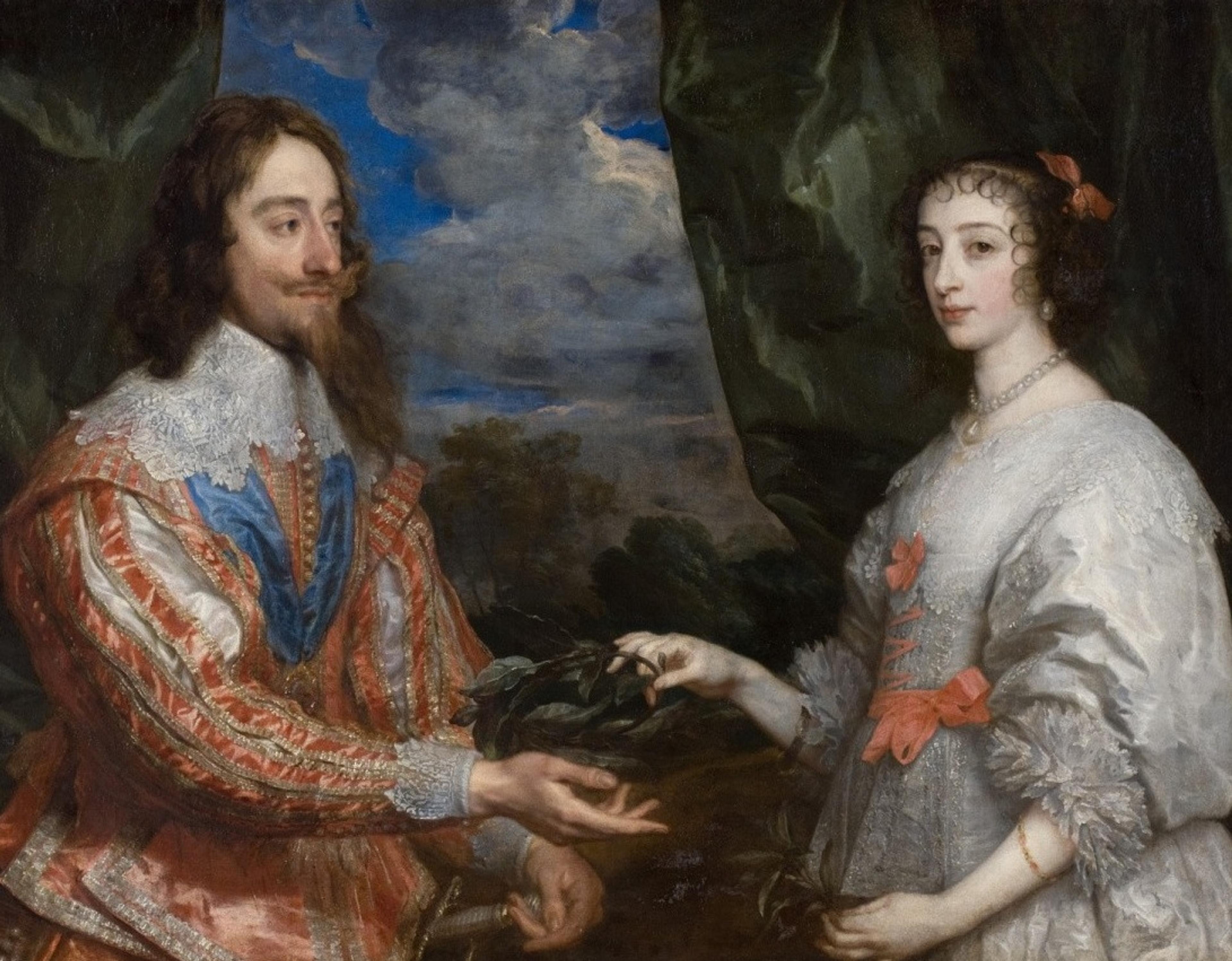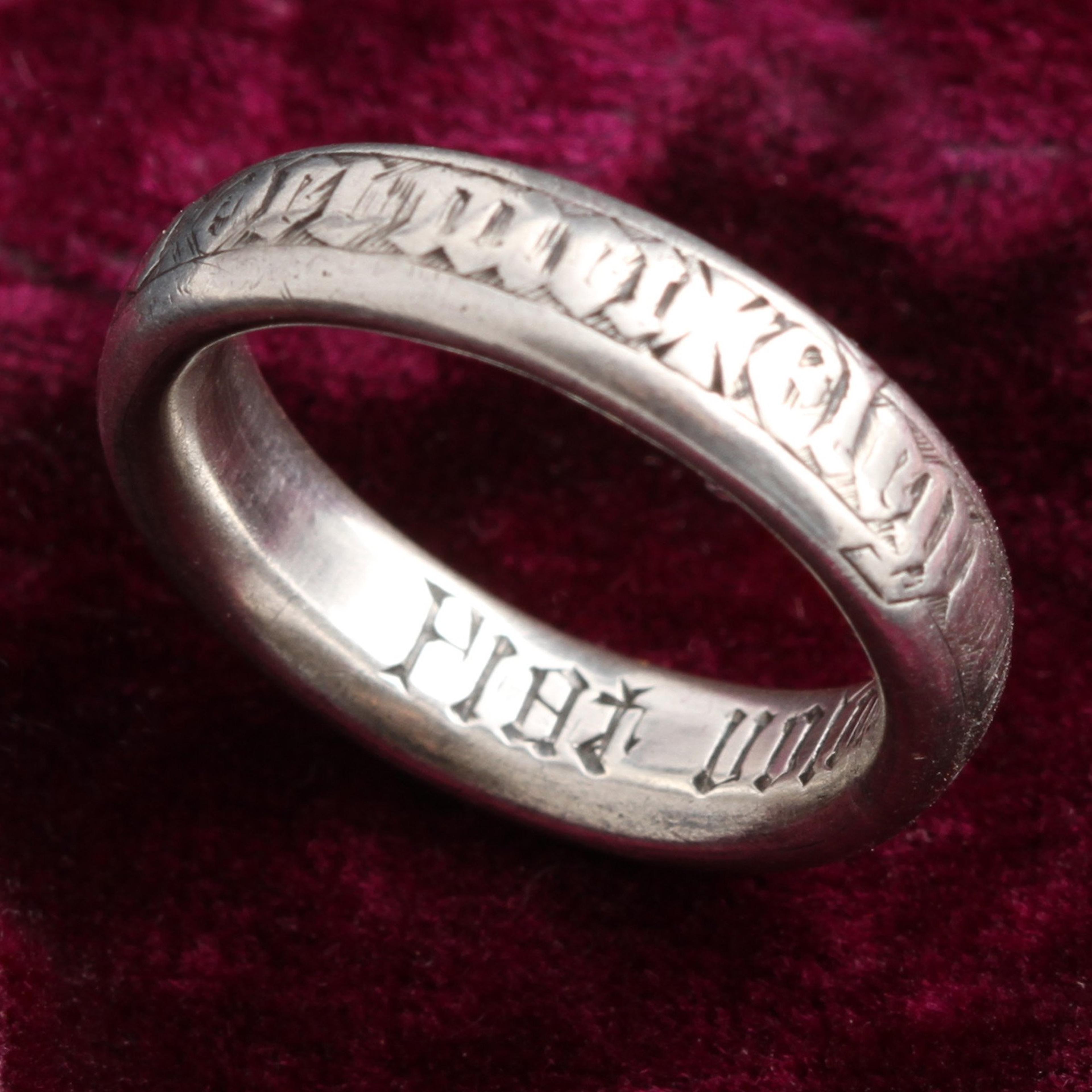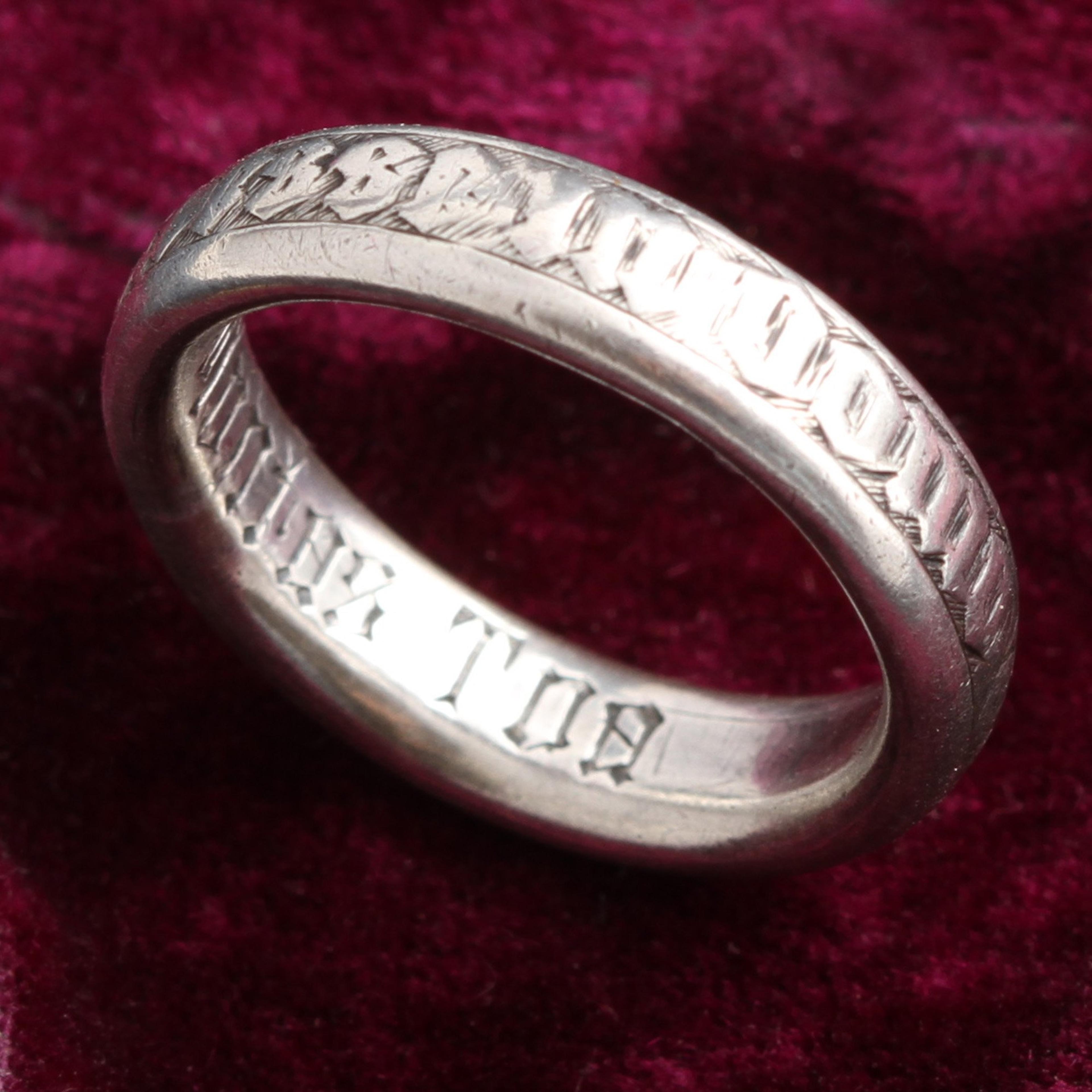This rare silver ring belonged to an 18th century nun. She would have been given this ring when she took her vows and became a "Bride of Christ." Apparently, there was often an actual wedding ceremony that took place in which the nun-to-be donned bridal clothes including a white veil and was then given a wedding band such as this one. Ceremony complete, she would exchange her white veil for a black one and commence her new life of religious devotion. The exterior of the ring features a psalm in Latin rendered in Gothic lettering. It translates to "I have chosen to be neglected in the house of my God". The interior is engraved "Fiat Voluntas Tua" or "Thy will be done." The exterior is worn and the interior very crisp suggesting that this ring was probably never taken off.
thedetails
- Materials
Silver
- Age
c. 1700
- Condition
Very good - wear to the exterior commensurate with age and use
- Stone
4.5, cannot be resized; 4.2mm shank
Need more photos?
Send us an email to request photos of this piece on a model.

Aboutthe
StuartEra
1603 — 1714
A new era dawned when Queen Elizabeth — the last Tudor monarch — died without an heir. The monarchy was temporarily displaced by the Commonwealth of England from 1649 to 1660 by Oliver Cromwell, but was restored — aka "The Restoration" — as Charles II was invited to take the throne. His father, Charles I, had been beheaded in 1649, and most of the jewelry we see from this period was at least stylistically related to this controversial political event. During this time, discoveries and innovations transformed England and Scotland, which were conjoined after a long period of feuding. Coffee became a new trendy beverage, with 600 coffeehouses in London all catering to a different type of clientele. This imported novelty beverage was possible because of the UK's rapidly expanding worldwide trade network. Not yet interested in acquiring territories, the island nation focused instead on making a fortune exporting wool and importing goods like slaves, sugar, and tea. Everyone (except the enslaved people, of course) benefited from the new merchant class that arose, and in the process the Royal Navy became the most powerful in the world. The look of London changed, too — after the Great Fire of 1666, Christopher Wren was hired to rebuild the city's damaged churches, with his greatest accomplishment being St. Paul's Cathedral.


